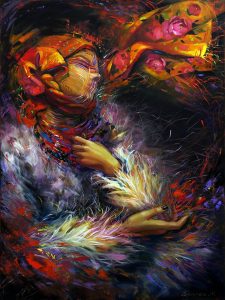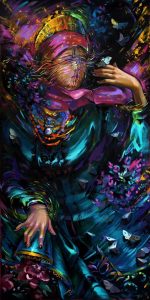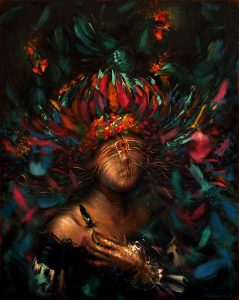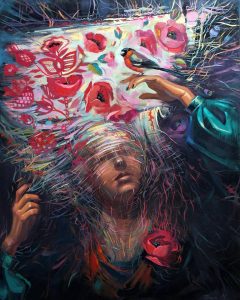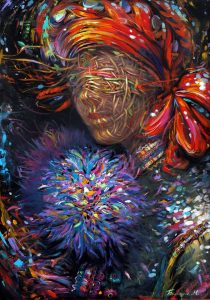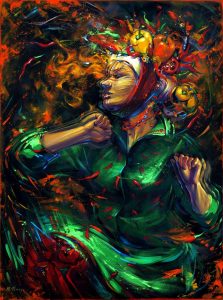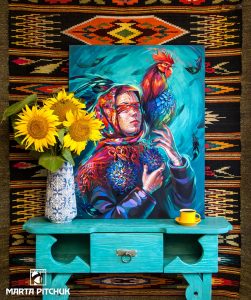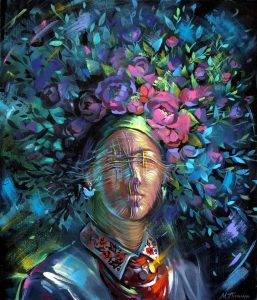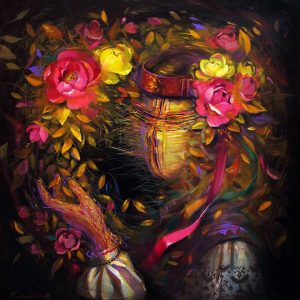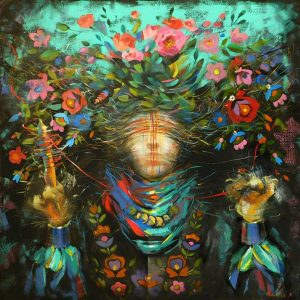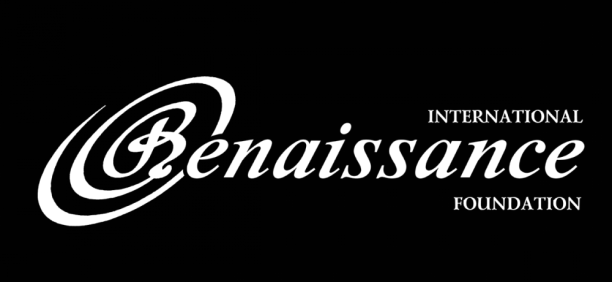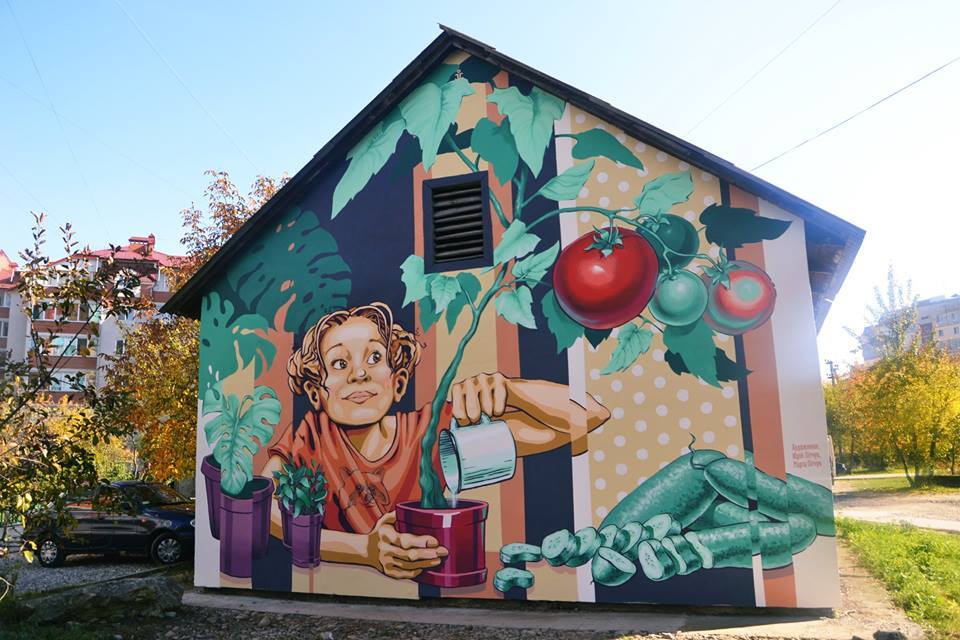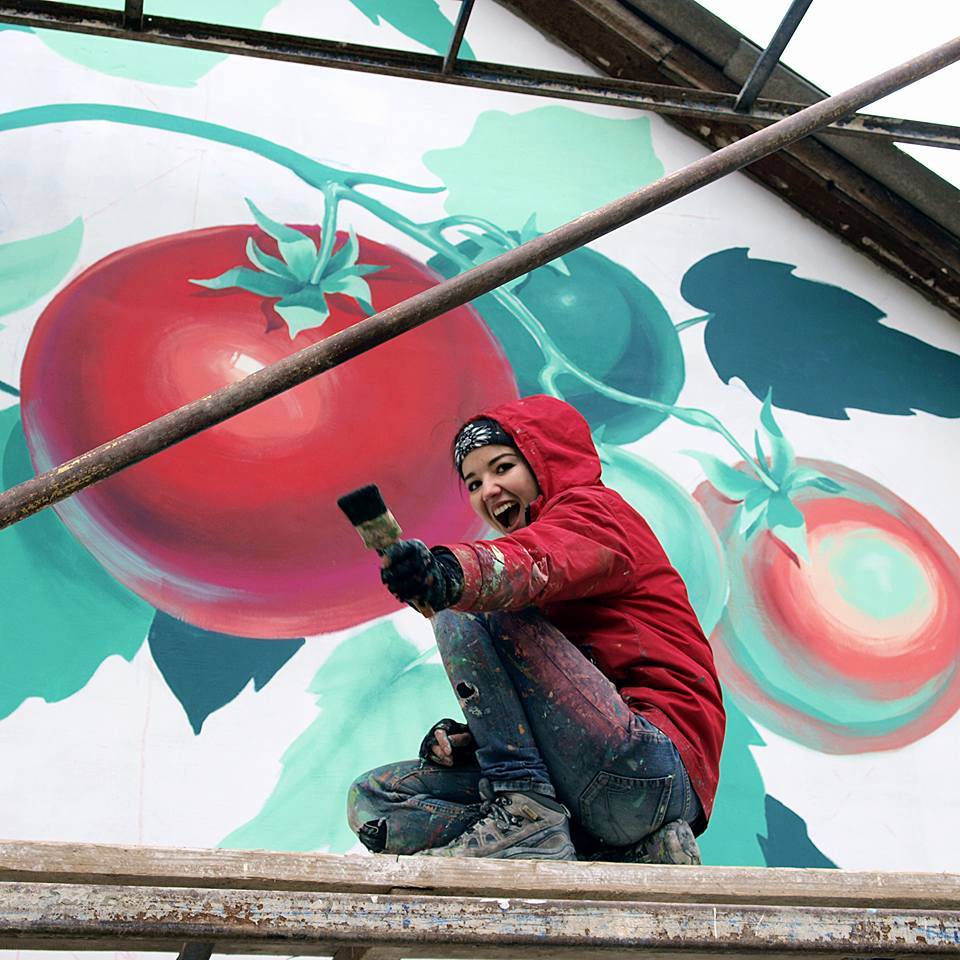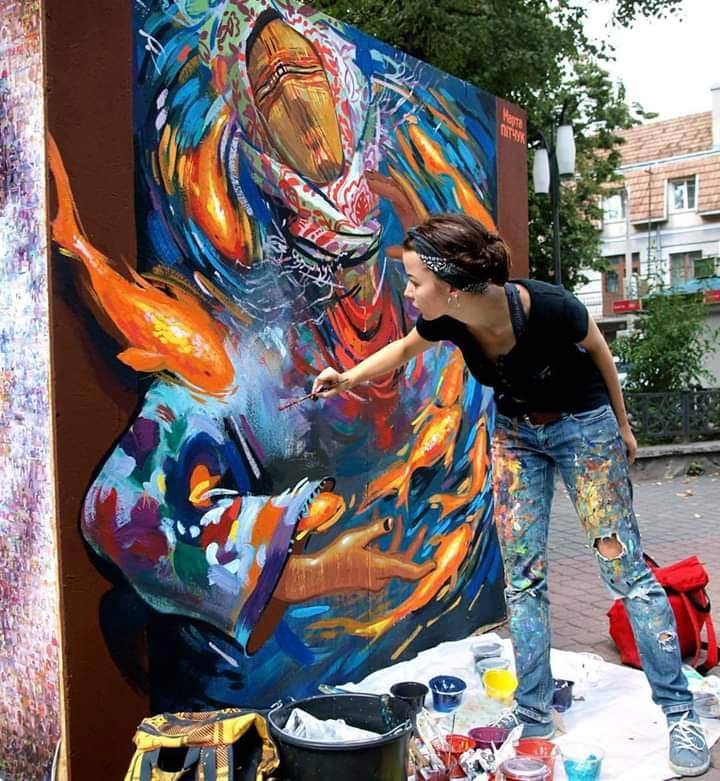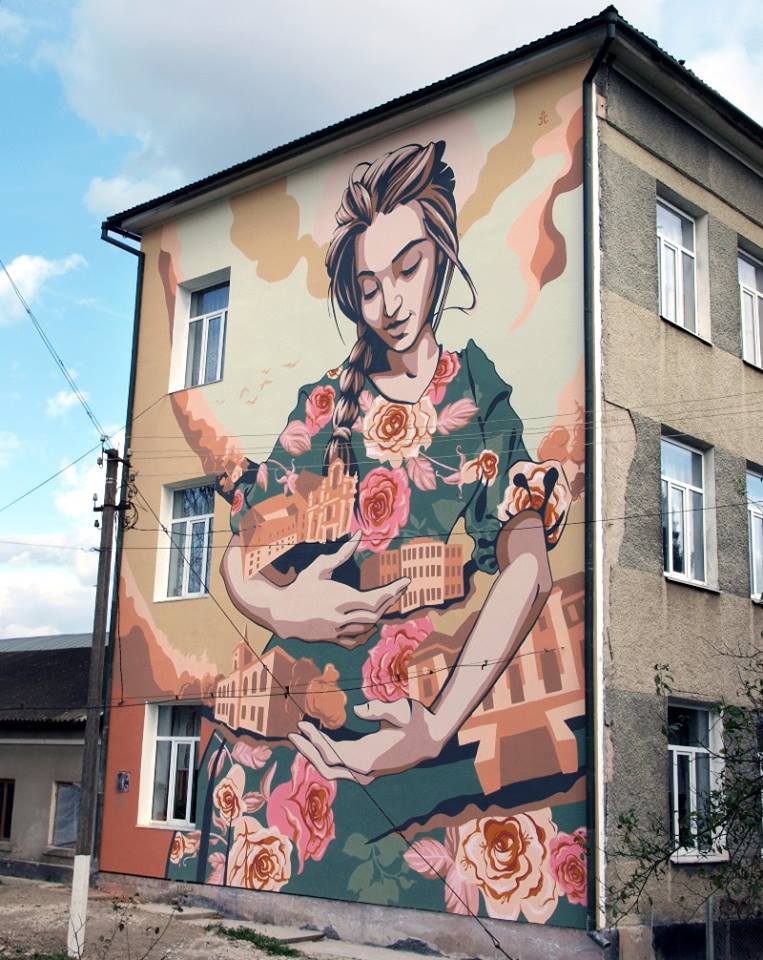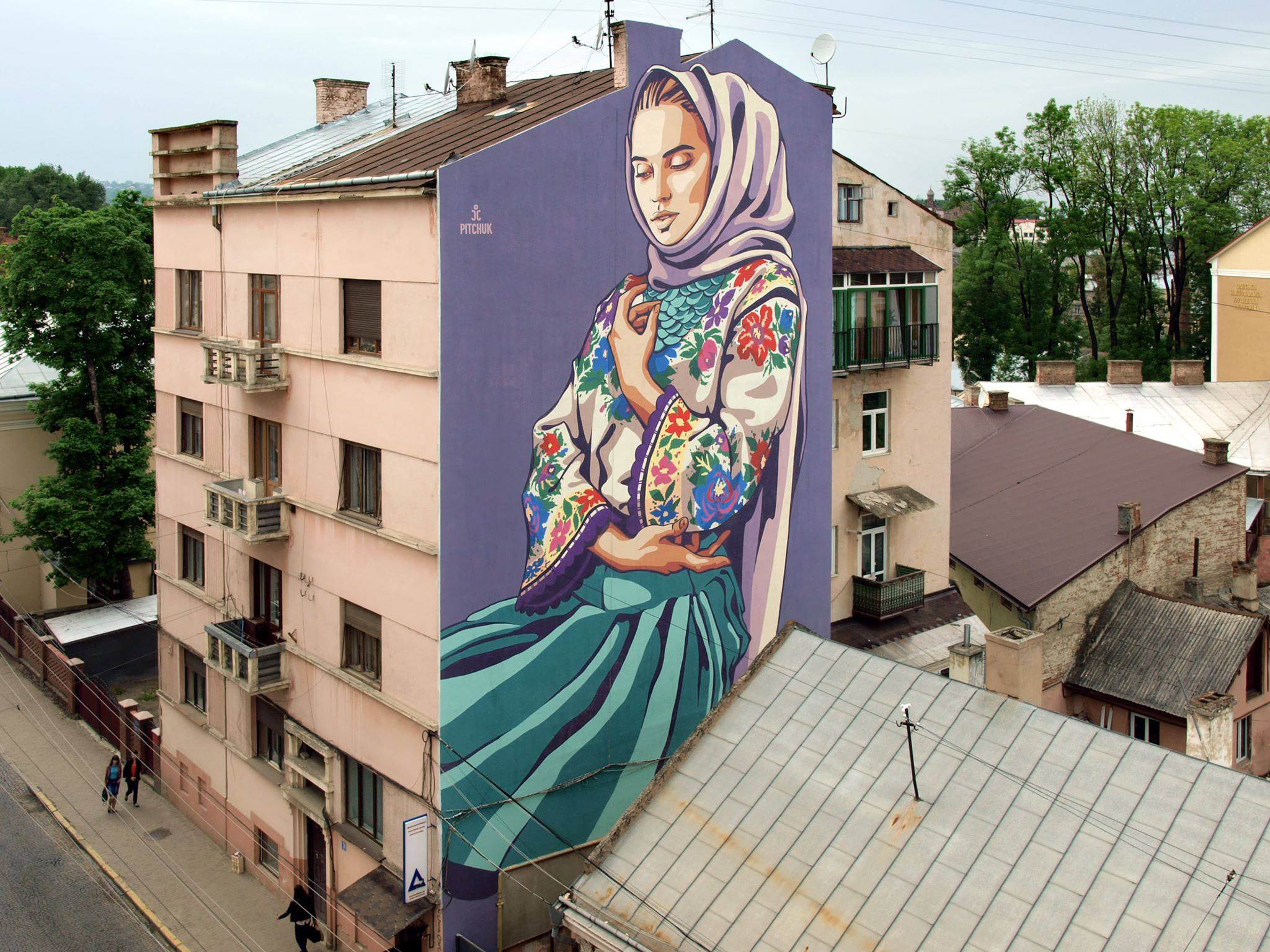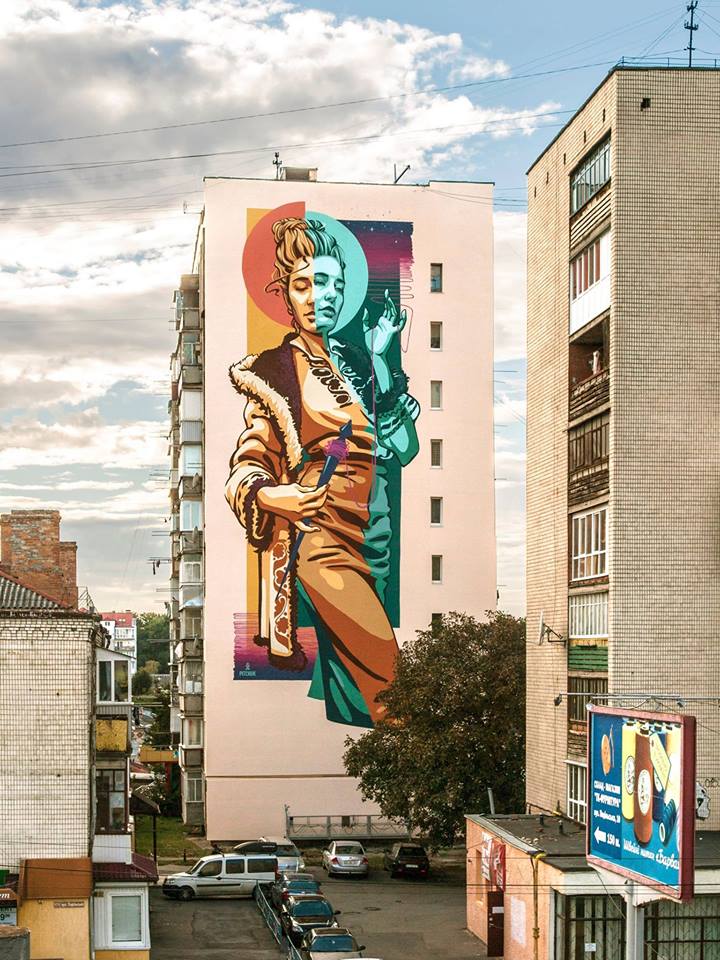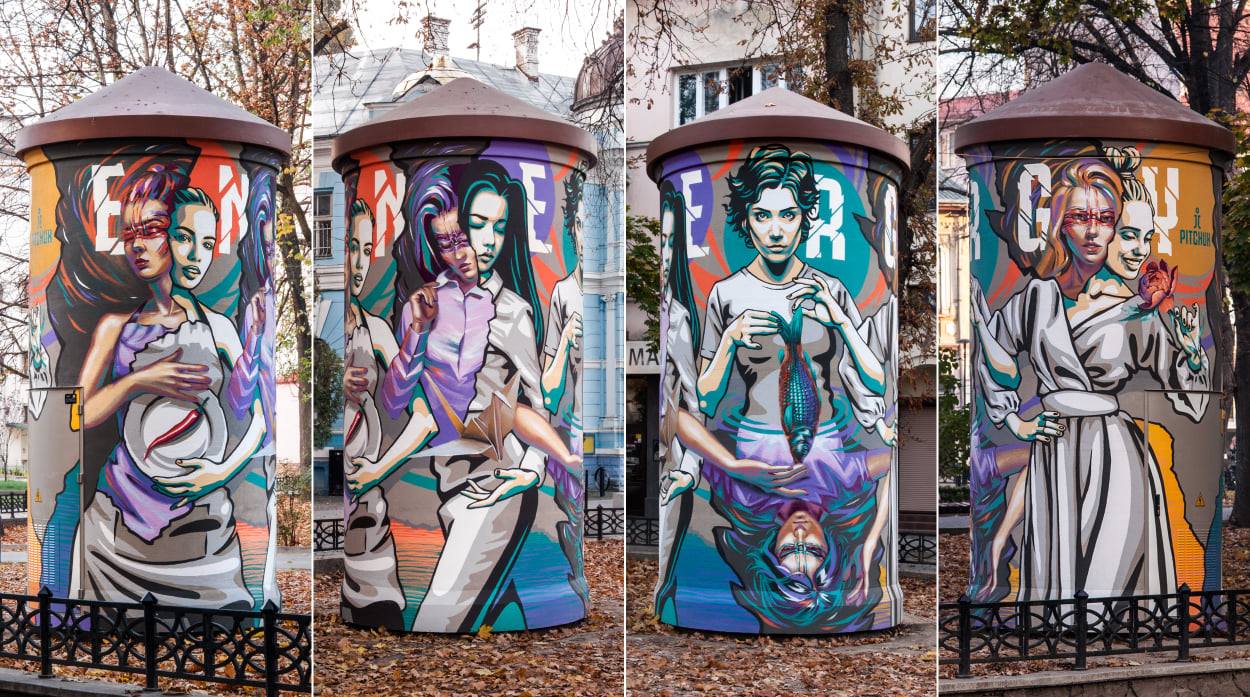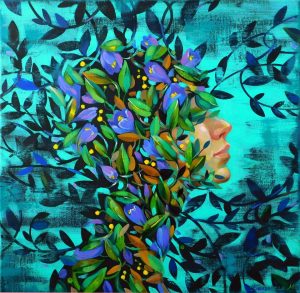
The inanimate doll of previous centuries flows into the present and merges into one whole with a real flesh and blood woman. The Motanka is no longer an object, but a live female individual with her particular personality, features, thoughts and views – an embodiment of the past that comes to life on canvas. Marta Pitchuk also uses traditional folk motifs that are embodied in her paintings in a modern manner.
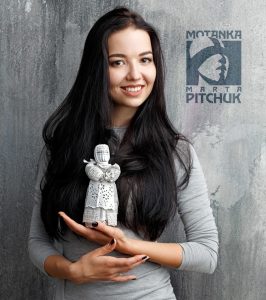
Marta Pitchuk was born in 1993 in Ivano-Frankivsk, Western Ukraine, where she still lives and works. In 2014, she completed courses in monumental and decorative painting at the Kosiv Institute of Applied and Decorative Arts of the Lviv National Academy of Arts. In 2015, she obtained her degree in illustration art at the Ukrainian Academy of Printing in Lviv.
“In fact, my goal was to “revive” the past and give it some feature of the present on canvas. I chose to work on the image of the sacred Motanka doll, which has been a symbol of our ancestral memory throughout the ages.”
Marta Pitchuk and her husband Yuriy are also actively engaged in street art, decorating grim-looking soviet-era buildings with bright murals, mainly composed of ancient Ukrainian symbols.
The Ukrainian Motanka Doll – Tradition and Modernity
According to historians, Motanka dolls appeared in Ukraine several thousand years ago, dating back to ancient Trypillya times . Our ancestors believed that natural threads and materials used to create these dolls were magical and protected the family from evil spirits.

The Motanka doll is faceless; the cross symbolizes the unity of heaven and earth, four cardinal points, four seasons, and the sun. The doll is an amulet, so it cannot have a strict human appearance; it protects its owner(s), and brings fertility to the homestead.
These dolls are usually made of natural materials such as hay, straw, wood, herbs, dry leaves, grains, seeds and are filled with fragrant herbs and decorated with traditional ornaments and embroidery.
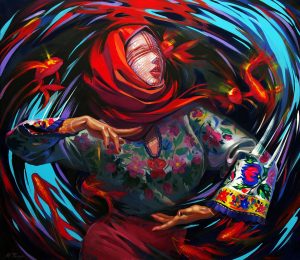
Today, Motanka dolls have became a popular gift idea for various holidays and weddings, baby showers, engagements, and even funerals.
The wedding Motanka doll helps brides turn away the evil eye and supports them during their marriage. At the birth of a child, relatives often offer a Motanka doll that lies in the child’s bed in order to protect the newborn’s sleep and well-being.
